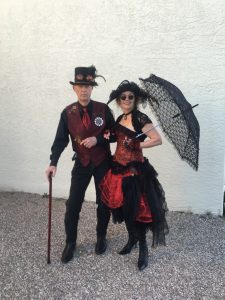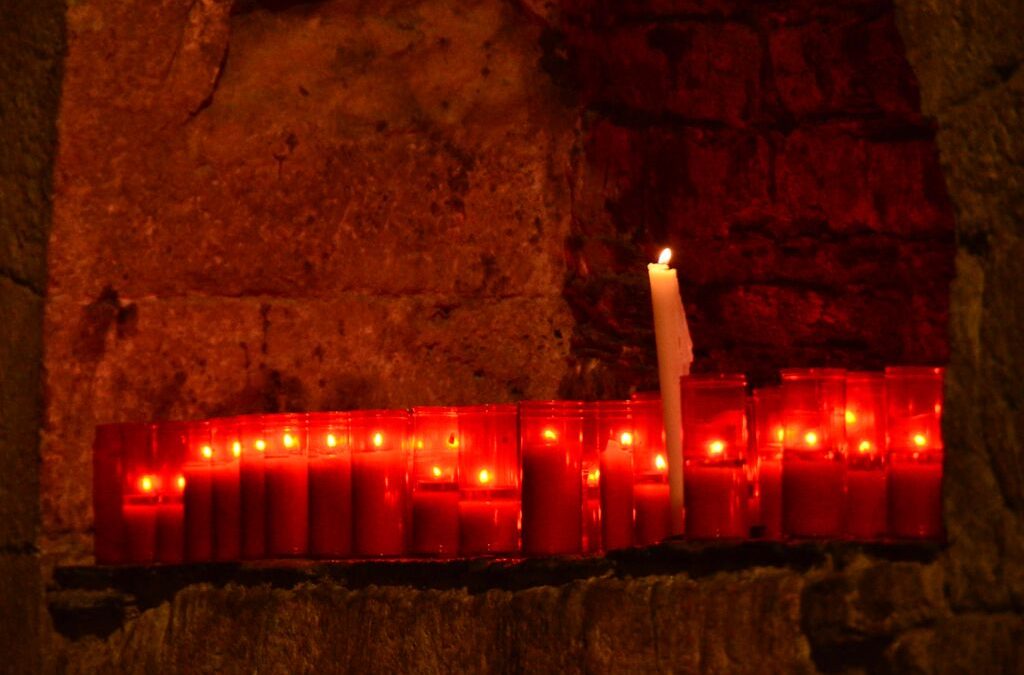This week, I’ve been writing about the elderly in our society, who often feel invisible, not seen or heard and lonely. It’s especially sad during the holiday season, when the grief of feeling alone and unseen naturally is more intense when compared to the seeming bliss all around.
John Prine sang it well:
Ya’ know that old trees just grow stronger,
And old rivers grow wilder ev’ry day.
Old people just grow lonesome
Waiting for someone to say, “Hello in there, hello.”
I ended my last post with the question: What can we do about it?
One of my readers, Deb McAlister Holland, a delightful 67-year-old great-grandmother posted this response:
(a) Vote for women and men who support equality (b) speak up about the double standards applied to ‘distinguished’ men with gray hair versus ‘old ladies’ with gray hair, and © take care to speak to and interact with older women we meet. After 9/11, I started making it a habit to smile at and greet women in hijabs, saris, or other ethnic/religious dress. I can’t tell you how many times women have told me I was the first “American lady” they had ever spoken to. If we, as women, set the example for our sons and daughters, perhaps future generations will be better.”
Ah, Deb, thank you for this. I couldn’t have said it better. Compassion, courtesy and respect are gifts each of us can give to our elders over and over. And it’s by modeling this behavior that we can begin to inspire our youth to do the same.
Deb also had this to say about what can we do to feel less invisible ourselves as we age:
“I have not experienced this [invisibility] yet. One reason, I think, is that I became disabled (Rheumatoid Arthritis) in my 50s and started using a fire-engine red walker with a bicycle basket on the front and a cup holder on the handle. Quite noticeable. What I have noticed is that the walker makes people smile — and offer help. More random people have offered help, introduced themselves, or started conversations in the years since I got the walker than in all the years when I was a dressed-for-success corporate exec.”
This is so empowering that I again felt compelled to quote Deb verbatim. We must remember to stand tall, wear fire-engine red anything, and claim our noticeability. This is Ed’s and my version of that:

Ed and I Being Visible
But here’s another way I think about the issue of elder invisibility:
Invisibility may not be the root problem of the elderly. The real problem may be that we, individually and as a society, assign too much value on being noticed, heard and visible.
Doris Lessing (quoted in Gardening the Soul) captured this quite eloquently: “And then not expecting it, you become middle-aged and anonymous. No one notices you. You achieve a wonderful freedom. It is a positive thing. You can move about, unnoticed and invisible.” Flying under the radar gives us the opportunity to make a difference in the world with a freedom we would lose if we were more noticed.
Over 40 years ago, Erik Erikson put forward a psychological model of the life cycle, which initially included eight stages, from infancy to old age. When the Eriksons themselves reached old age, they added a ninth stage of development, one in which wisdom plays a crucial role. After interviewing the Eriksons in the late 1980s, when both were in their 80s, Dr. Goleman wrote in the New York Times, “They depict an old age in which one has enough conviction in one’s own completeness to ward off the despair that gradual physical disintegration can too easily bring.”
It seems that as my physical and sensory abilities disintegrate, my reflections in old age on the course of my life can foster humility, wisdom, peace, and in Dr. Goleman’s words, a “conviction of my own completeness,” which does not depend on being seen or heard — during the holidays or any other time of year.


I think that to the degree I have matured sufficiently to live in the humility, wisdom and peace that come with a conviction of my own completeness, I am far more likely to notice and provide a warm recognition for those that I might otherwise ignore as invisible. Does this make sense to you?
It does make a lot of sense – it suggests that there’s a whole lot of “incompleteness” within all of us, doesn’t it?
Marlena & Ed, your posts brought an interesting conundrum to mind: in continuing care retirement communities, where I will take up residence in a few years, everyone but the staff will be of the “invisible” age. Then what? When I’ve visited my intended community, I’m struck by how many people greet each other with smiles, nods, and pleasantries. (There are 640 residents, so I doubt they all know each other personally.) My point: invisibility is most prevalent in age-heterogeneous communities & it’s there when cultural norms about ‘aging’ and ‘ageism’ are felt.
That’s such an important observation, H! I think about the ramifications of this in so many areas, such as racism and sexism, as well as ageism. As always, thank you for your thought-provoking presence.
(Yesterday, Ed and I visited Touchmark Bend, the continuing care retirement community that is likely to be our home in several years. Same thing: Smiles and nods – even a big hug from a woman we didn’t know:-)
I am visiting the area where I grew up but haven’t been a resident for 40 years. On a visit a few years ago, a family member told me of a very pleasant cafe in a college town. Aside from the very pleasant staff, most of the young folks ignored my smile. I’m 72 with lots of gray hair. Nearly all of my fellow “Qtips” answered my smile with and/or a pleasant greeting. Some even struck up a conversation.
Maybe as Howard suggests below, we only “see” similar others?
In China, traditionally, families have taken care of their elders by incorporating them into their households and daily life. Generations living together have proven to be of great help to old and young alike. But mobility and modernity, where the one-child policy was only abolished in 2016, have increased the burden on the young. The Chinese government issued a law that requires adults to support, visit and care for their aging parents. Just this October, they scrapped a requirement of formal education for people seeking to be certified as caregivers for the elderly to help in this escalating problem. In a dictatorship, there is a decree for everything.
Having lived far from my parents as they aged, I felt guilty for not having been able to provide them with companionship and care, with the burden falling on my brother and other caregivers. One hour during one of my visits made a tremendous difference in their outlook, alertness and happiness. I have noticed that those that age well and maintain their “visibility” are vibrant, engaged and interested in life, and I admire them. That is easy for me to say while I am still in good health and with good cognitive powers. I’m very worried that as I age, this may not be the case and I will fall in the miasma of invisibility. Those lucky enough to have a life companion fare much better than the ones having to face old age alone. While we are still young, we must strive to create a social network that will hopefully keep us engaged, provide support as we age, and keep our minds alive. A friend of mine, older and with a very bad hearing disability, says that she tells people how much she depends on their graciousness. Perhaps we need to start now being gracious to others, and hope that by the time we need it, there will be some that will step up to the plate.
If I could, rather than a continuing care retirement community, I would opt to board a cruise ship and continue cruising until my money runs out and they kick me off! 😂
Oh, dear Goldie,
There is so much to think about deeply in this comment. Thank you for posting it!
“Perhaps we need to start now being gracious to others, and hope that by the time we need it, there will be some that will step up to the plate…”
My thought in reading this is that one of my challenges is/will be to be gracious about receiving others’ help and graciousness when I need it.
Sending much love to you and Daniel!
A poignant topic Marlena. . .invisibility and the “elderly.” Though I didn’t receive your original blog, I do get the idea. And I’ve been troubled by it for awhile. The issue of “what’s to become of me?” We moved my mother-in-law with dementia to our town when she was in her 80’s and supervised her care in an excellent assisted living facility. I would say the 75 residents there had ongoing social opportunities and recognition, a much higher quality of life than so many others. Others who live alone and have significant health limitations and those with financial limitations. Others who have no family to visit or look after them.
You ask what can we do? A group in our town has formed and incorporated, joining the network of “Home in Place” groups across the nation. The goal is to work at the local level identifying the services and resources that will allow people to continue to live comfortably in their own homes. The people joining this network would not be so invisible.
In my own neighborhood where most people are older and retired, many widowed, I am toying with visiting one home a week, introducing myself, just connecting. I can start with one.
“What’s to become of me?”
Ouch.
That drives the point home!!
I love how you end your post, dear Pat: “I can start with one.”
Thank you for this!